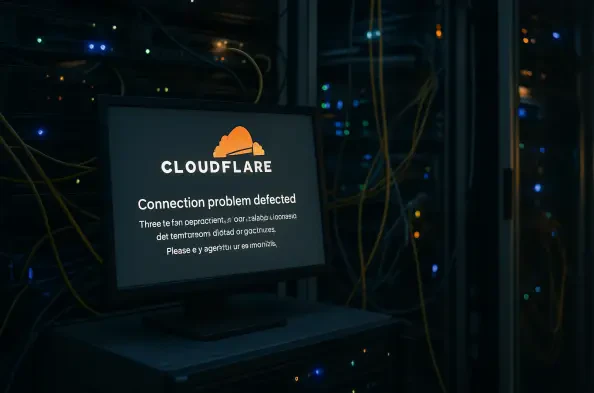Vernon Yai is a renowned data protection expert whose insights into privacy protection and data governance have shaped industry standards. With a focus on risk management and innovative techniques for safeguarding sensitive information, Vernon brings a wealth of knowledge to today’s discussion on a recent high-profile internet outage. This interview delves into the complexities of cloud infrastructure, the cascading effects of technical failures, and the critical importance of resilience in an interconnected digital world. We’ll explore the root causes of such disruptions, their impact on businesses and users, and the strategies needed to prevent future incidents.
Can you walk us through the recent Cloudflare outage and what triggered it on that Tuesday?
Certainly. The outage began around 11:20 UTC on Tuesday and lasted several hours before full resolution. It stemmed from an internal configuration error within Cloudflare’s systems. Initially, there was suspicion of a DDoS attack due to the unusual behavior of the network, but deeper investigation revealed the true culprit: a misconfiguration in database permissions. This error caused a feature file in their Bot Management system to double in size, exceeding its limit and leading to widespread software failure across their network.
How did this issue affect major websites and the broader internet ecosystem?
The impact was significant since Cloudflare supports roughly 20% of all websites on the internet. Major platforms like X, Uber, Canva, and ChatGPT were knocked offline or experienced severe disruptions, delivering internal server error messages to users. This kind of downtime doesn’t just affect individual users; it disrupts global online activity, halts business operations, and can lead to substantial financial losses for companies relying on these services for their day-to-day functions.
What can you tell us about the technical glitch itself and why it caused such chaos?
At the core of the issue was a change in database permissions within a ClickHouse database cluster. This change led to multiple entries being output into a feature file, bloating its size beyond acceptable limits. When this oversized file was distributed across Cloudflare’s network, the software reading it couldn’t handle the load and failed. It’s a stark reminder of how even a small misstep in configuration can cascade into a network-wide problem when systems are so deeply interconnected.
How did the system’s behavior during the outage add to the confusion for the team trying to resolve it?
What made this particularly tricky was the system’s erratic behavior. It would fail and then recover every few minutes, which is unusual for an internal error. This fluctuation stemmed from a query running every five minutes on the database cluster, sometimes generating good data and sometimes bad, depending on which part of the cluster was queried. This inconsistency initially misled the team into thinking they were dealing with an external attack rather than an internal flaw.
Can you explain the steps taken to resolve the outage and restore normalcy?
Once the root cause was identified, the team acted swiftly to stop the propagation of the problematic feature file across the network. They manually inserted a known good file into the distribution queue and forced a restart of the core proxy systems. By 14:30 UTC, core traffic was largely flowing normally again, and by 17:06 UTC, all systems were fully operational. It was a methodical process of isolating the bad data and replacing it with a stable configuration.
What do you think this outage means for trust in cloud service providers like Cloudflare?
Trust is everything in this industry, and an outage of this scale can shake confidence, especially for businesses that depend on uninterrupted service. When a provider supporting such a vast portion of the internet goes down, it’s not just a technical hiccup—it’s a wake-up call for companies to reassess their reliance on third-party services. While Cloudflare has a strong track record, with no major outage since 2019, incidents like this highlight the fragility of our digital infrastructure and can prompt businesses to demand more robust safeguards.
How does this incident underscore the importance of business continuity planning in today’s digital landscape?
This outage is a textbook example of why organizations must have solid business continuity and disaster recovery plans. With so much of our economy tied to the internet, downtime can cost billions, as seen in other major disruptions last year. Companies need to map out their dependencies on third-party providers and have backup strategies in place. It’s not just about reacting to failures but anticipating them and ensuring there’s a way to keep critical operations running, even if a key service provider stumbles.
What lessons can the industry learn from this to prevent similar disruptions in the future?
There are several takeaways here. First, rigorous validation of configuration changes is essential—treating internal data with the same scrutiny as user input can catch issues early. Second, having global kill switches for features can limit damage if something goes wrong. Finally, reviewing failure modes across all critical systems helps identify weak points before they become crises. Cloudflare is already working on hardening their network, and I think other providers should follow suit by prioritizing resilience over rapid deployment in some cases.
What is your forecast for the future of cloud infrastructure reliability given these challenges?
I believe we’re at a turning point where reliability will become the top priority for cloud infrastructure. As technologies like AI and quantum computing grow, the networks powering them must be as dependable as utilities like electricity or water. We’ll likely see more investment in redundancy, automated error detection, and stricter change management protocols. However, the interconnected nature of the internet means some level of risk will always exist. The goal isn’t just to prevent outages but to minimize their impact and recover faster when they do happen.






